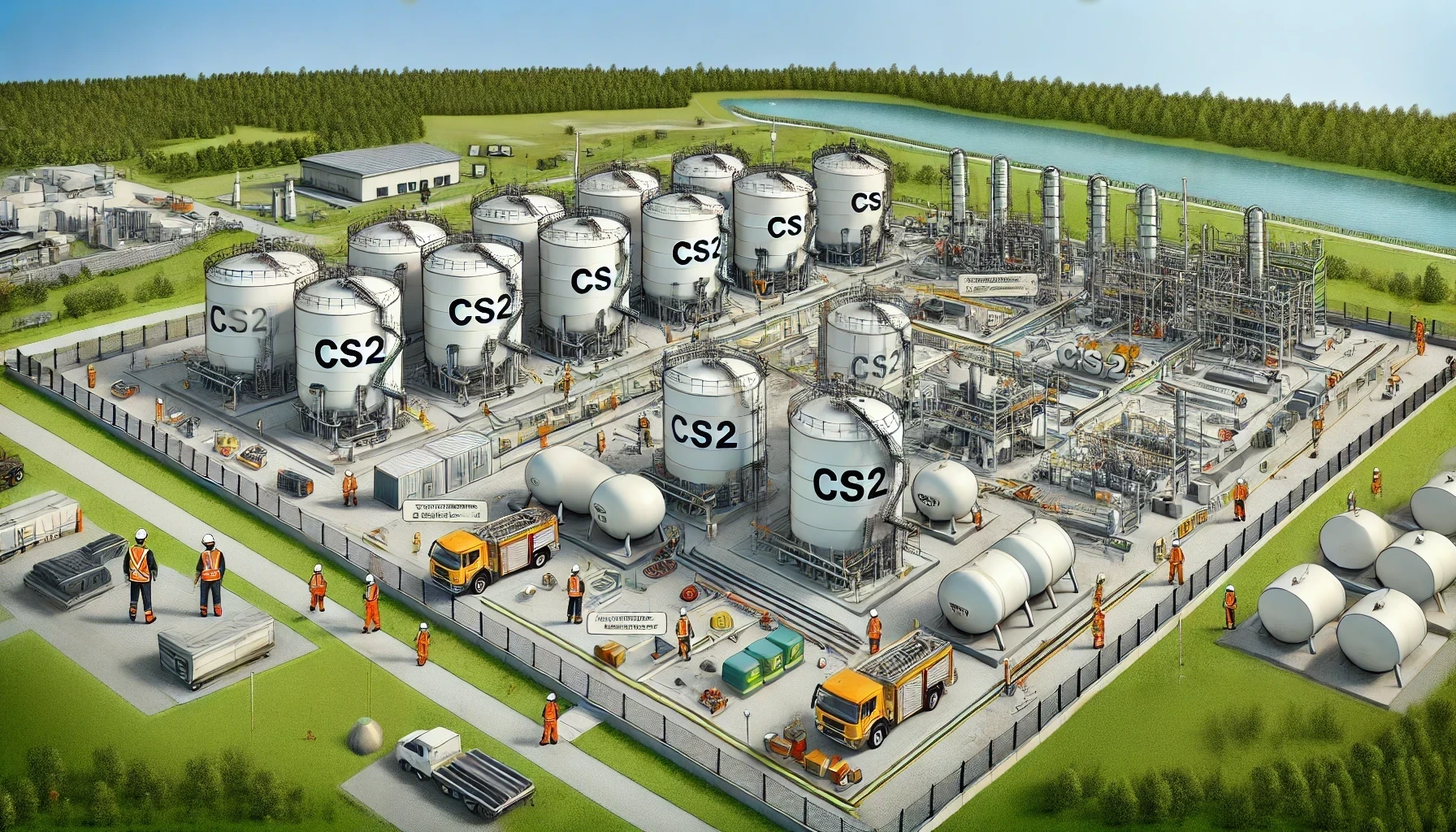
Safety Management of Carbon Disulfide Storage Tank Area
The safety management of carbon disulfide storage tank areas is critical in the chemical industry. JinHong Company has a large storage capacity for carbon disulfide, classified as a secondary major hazard source. Therefore, stringent safety management is imperative. Establishing suitable safety operation control procedures for our carbon disulfide tank area not only ensures the safety of company personnel and property but also guarantees stable and orderly company development. This article briefly analyzes the fire characteristics of the carbon disulfide tank area and shares preventive measures.
I. Fire Characteristics of Carbon Disulfide Tank Area
- Flammable and Explosive
Once a fire occurs in a carbon disulfide storage tank, the burning speed is fast, the fire is fierce, the flames are high, and the heat radiation is strong. This can easily ignite adjacent storage tanks and other combustible materials. If the storage tank explodes, the tank body will rupture, the tank top will be blown off, and the tank wall will be damaged. Carbon disulfide flowing out from the cracks can form ground flow fires, causing simultaneous burning of liquids on the tank top and ground, leading to three-dimensional fires. Flow fires can directly engulf adjacent storage tanks within the same fire barrier. If not quickly extinguished, a chain reaction can occur, alternating explosions and fires, posing significant risks to personnel and equipment.
- High Rescue Difficulty
The explosion characteristics of carbon disulfide storage tank fires increase the difficulty of rescue operations. The splashing and flowing of the substance itself and the diffusion of toxic substances leaked at the fire scene bring great challenges to firefighting efforts. Appropriate extinguishing agents should be used according to its physicochemical properties; different fire sites and equipment require different tactical methods and firefighting techniques. Without suppression, carbon disulfide storage tank fires can rapidly expand, making rescue efforts lengthy.
- Environmental Pollution
Carbon disulfide is harmful, flammable, and explosive. Fire, explosion, or leakage accidents can significantly impact the surrounding environment. The wastewater generated during rescue operations and the toxic gases produced by burning carbon disulfide can pollute the atmosphere and water resources, with significant difficulty in treatment and considerable harm.
II. Safety Control Measures for Storage Tanks
- Personnel Preparation
Personnel are the most crucial factor in system safety. Reducing unsafe behaviors among operators effectively prevents accidents. Recent accident cases show that unsafe behaviors mainly include weak responsibility, inadequate fulfillment of duties, process operation errors, dereliction of duty during shifts, and inspection failures. Through training, education, management constraints, incentive mechanisms, and safety culture construction, unsafe behaviors can be controlled.
- Equipment Operation
The potential danger of machinery and equipment in operation is a significant manifestation of unsafe conditions. Unsafe conditions in equipment include lack or defects in protective, insurance, and signal devices; mismatched materials, insufficient strength, damage, cracks, corrosion leakage, poor switching, delayed actions, improper switches, poor transmission, and fixed instability. The human-machine system is a crucial part of the production process, and the interaction of unsafe conditions and behaviors can lead to accidents. Correctly judging and controlling unsafe conditions is of practical significance in preventing and eliminating accidents.
- Safety Inspections
Safety inspections are vital for ensuring storage tank safety, aiming to improve safety management levels. Identifying and addressing problems, improving unsafe behaviors and conditions, and eliminating hidden dangers prevent accidents. Safety inspections for tank areas should refer to the "Safety Code for Work in Hazardous Chemical Storage Tank Areas," including checking the operating status of tank accessories, valve and pipeline leaks, alarm instruments, the status of containment walls, site tool placement, and fire protection facilities. Inspections should be documented, with problems promptly reported and addressed, and electronic inspections with photos implemented to ensure the effectiveness of safety checks.
- Regular Maintenance
Annual comprehensive maintenance plans should be formulated, implementing the "five determinations": determining the maintenance plan, personnel, safety measures, quality, and progress. Responsibilities must be assigned to individuals, with specific storage tank maintenance and responsible areas allocated based on job responsibilities, supported by maintenance teams including electromechanical personnel, equipment operators, and instrument inspection personnel.
In recent years, accidents involving hazardous material storage tanks have occurred frequently, with increasing scales. Therefore, it is essential to actively address and manage hidden dangers in hazardous material tank areas. Attention to carbon disulfide storage tanks is critical, as accidents not only cause property losses but also have significant social impacts. Responsibilities must be taken seriously, with thorough safety inspections and timely elimination of hidden dangers to ensure the stable operation of the carbon disulfide tank area.